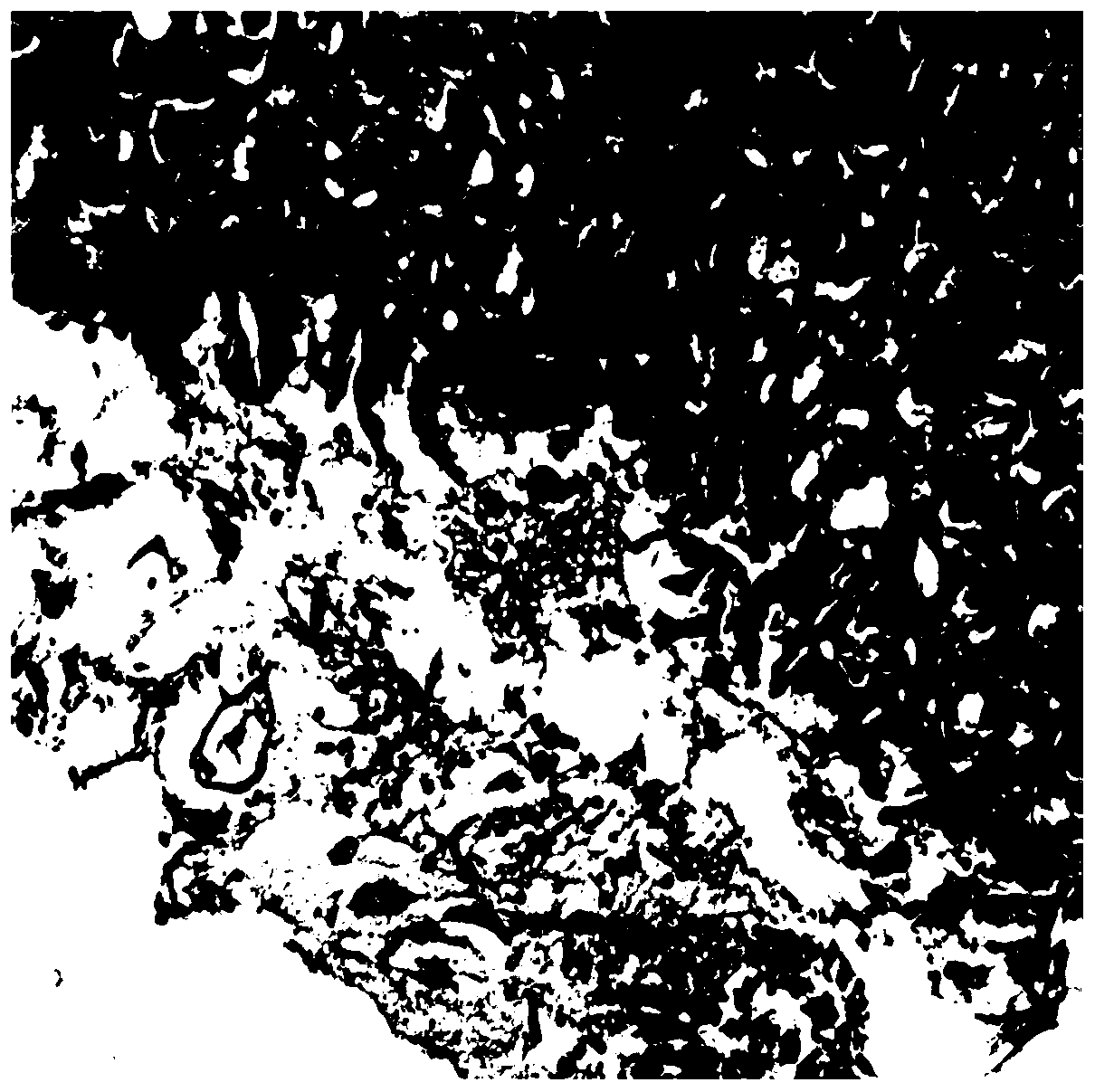Preparation method of mouse chronic atrophic gastritis model
A technology for atrophic gastritis and mice, applied in the field of medicine, can solve the problems of high infection volume, difficult colonization, short cycle, etc., and achieve the effects of stable pathological changes, low experimental cost and simple operation.
- Summary
- Abstract
- Description
- Claims
- Application Information
AI Technical Summary
Problems solved by technology
Method used
Image
Examples
Embodiment 1
[0016] 1. Animal grouping: 280 6-week-old Kunming mice were randomly selected and divided into PBS control group, Helicobacter pylori group, N-methyl-N-nitro-nitrosoguanidine group, ammonia water group, and "Helicobacter pylori group". Bacteria group + N-methyl-N-nitro-nitrosoguanidine" two-factor combined model group, "Helicobacter pylori group + base-N-nitro-nitrosoguanidine group + ammonia water" three-factor combined model group Modules, male and female.
[0017] 2. Immune intervention and chemical injury: The experimental group was fed with 120 μg / mL N-methyl-N-nitroso-nitrosoguanidine according to the body weight of the mice at 5 mL / kg, once a day, 7 consecutive interventions, feeding and drinking water 0.02wt.% ammonia water. Control group: without any intervention, normal feeding.
[0018] 3. Bacterial infection: use clinically isolated Helicobacter pylori strains, which are identified as Helicobacter pylori by Gram staining, urease test, oxidase test, catalase test ...
Embodiment 2
[0027] Adopt the method of above-mentioned embodiment 1, Helicobacter pylori is poured 1 * 10 per mouse 8 CFU, N-methyl-N-nitro-nitrosoguanidine was administered to mice at a concentration of 100 μg / mL at a concentration of 5 mL / kg, once a day, for 7 consecutive interventions, and 0.04wt.% ammonia water was used for feeding and drinking water. The experimental results are shown in Table 2.
[0028] Table 2 Modeling results of chronic atrophic gastritis
[0029]
Embodiment 3
[0031] Adopt the method of above-mentioned embodiment 1, Helicobacter pylori is poured 1 * 10 per mouse 9 CFU, N-methyl-N-nitroso-nitrosoguanidine was administered orally with a concentration of 110 μg / mL according to the body weight of the mice at 5 mL / kg, once a day, for 7 consecutive interventions, and 0.03wt.% ammonia water was used for feeding and drinking water. The experimental results are shown in Table 3.
[0032] Table 3 Modeling results of chronic atrophic gastritis
[0033]
PUM
 Login to View More
Login to View More Abstract
Description
Claims
Application Information
 Login to View More
Login to View More - R&D
- Intellectual Property
- Life Sciences
- Materials
- Tech Scout
- Unparalleled Data Quality
- Higher Quality Content
- 60% Fewer Hallucinations
Browse by: Latest US Patents, China's latest patents, Technical Efficacy Thesaurus, Application Domain, Technology Topic, Popular Technical Reports.
© 2025 PatSnap. All rights reserved.Legal|Privacy policy|Modern Slavery Act Transparency Statement|Sitemap|About US| Contact US: help@patsnap.com



